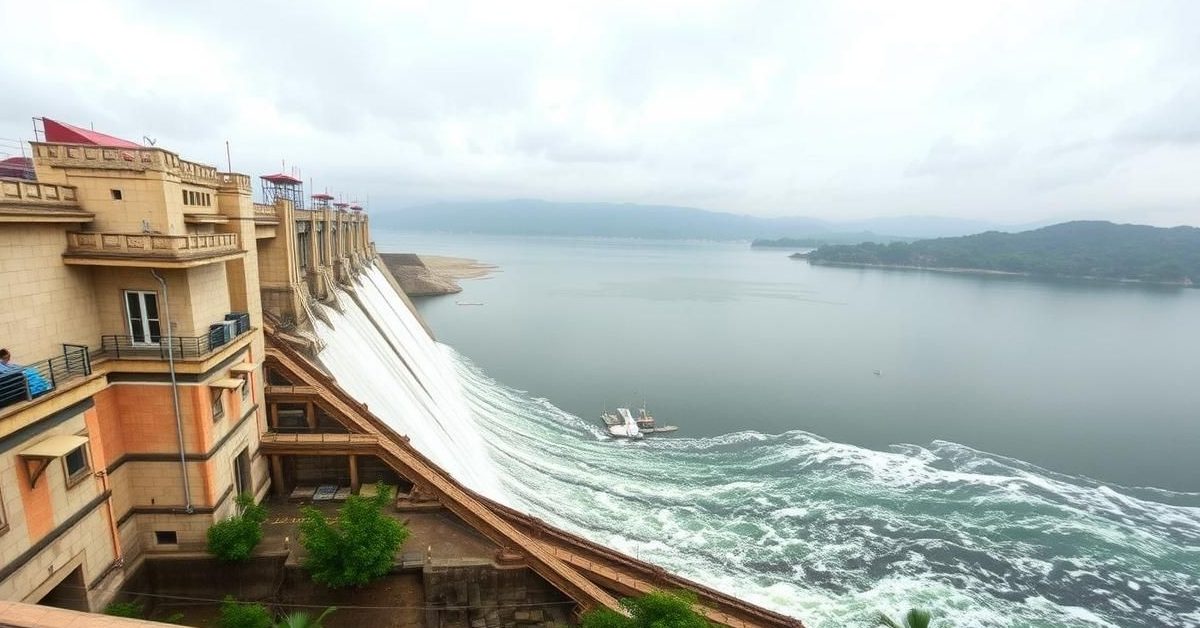India is facing an increasing threat from natural disasters, with flash floods intensifying due to climate change and the risk of tsunamis from powerful earthquakes highlighting global seismic vulnerabilities. These phenomena underscore the urgent need for enhanced disaster preparedness and a deeper understanding of geological forces.
India’s Escalating Flash Flood Hazard
Flash floods, defined as rapid-onset floods with high peak discharge within hours of a causative event, are a significant concern for India. While extreme rainfall directly causes some, a large majority result from a combination of intense precipitation and pre-existing soil conditions.
Geographical factors play a crucial role. Areas along the west coast and Central India are particularly prone due to the ‘flashiness’ of their river sub-basins, meaning water levels rise quickly after heavy rain. The prevailing soil conditions in these regions greatly influence how fast water infiltrates the ground. In the Himalayas, steep slopes and high relief also contribute to the rapid development of flash floods.
Climate Change’s Impact on Floods
Climate change is significantly amplifying the flash flood risk. Research from IIT-Gandhinagar points to the Himalayas, the west coast, and Central India as primary hotspots. A warmer atmosphere holds more moisture—roughly 7% more for every 1 degree Celsius increase in average temperature—leading to more intense rainfall events.
Data from 1981 to 2020 shows a doubling of extreme precipitation occurrences during India’s pre-monsoon season. Similarly, monsoon extreme rainfall has increased by 56%, post-monsoon by 40%, and winter by 12.5%. These trends directly correlate with the observed rise in flash flood incidents, from 132 in 2020 to 184 in 2022, as reported by the Union Ministry of Jal Shakti.
Understanding Earthquake-Generated Tsunamis
Tsunamis are devastating ocean waves primarily caused by powerful underwater earthquakes. For an earthquake to trigger a tsunami, it must occur beneath the ocean and cause a sudden vertical displacement of the seafloor, either uplift or subsidence.
Shallow earthquakes are more likely to generate tsunamis because their energy travels more directly to the surface. Deeper earthquakes, while still powerful, dissipate more energy as seismic waves travel longer distances to the surface.
Geological Factors in Tsunami Formation
Most tsunamis are initiated by “reverse” faulting, where a block of rock moves upwards relative to another block due to immense compression forces. This sudden vertical shift in the ocean floor displaces a large volume of water, creating the initial tsunami wave.
While earthquakes with magnitudes greater than 7.0 can cause tsunamis, the most destructive and far-reaching events are typically triggered by magnitudes exceeding 8.0. These exceptionally strong quakes release enough energy to generate massive waves that can travel across entire oceans.
The Kamchatka Earthquake Example
The recent magnitude 8.8 earthquake off Russia’s Far Eastern Kamchatka Peninsula serves as a stark example. This powerful quake, one of the strongest since 1900, generated tsunami waves reaching up to 16 feet.
Its shallow depth of just 19.3 km beneath the seafloor was a critical factor in its ability to produce significant tsunami waves. The Kamchatka quake was also a result of reverse faulting. It occurred near the Kuril-Kamchatka Trench, a highly active tectonic plate boundary where the Pacific Plate is rapidly subducting beneath the Okhotsk Plate, leading to frequent large seismic events in the region.
- India’s flash flood risk is rising due to increased extreme rainfall, a direct consequence of climate change.
- Tsunamis are primarily caused by shallow, high-magnitude underwater earthquakes that vertically displace the seafloor.
- Geological features like steep slopes in the Himalayas and active subduction zones like the Kuril-Kamchatka Trench significantly contribute to natural disaster vulnerability.
Addressing these growing threats requires advanced early warning systems, focused research on vulnerable areas, and comprehensive strategies for climate change adaptation and disaster resilience.















